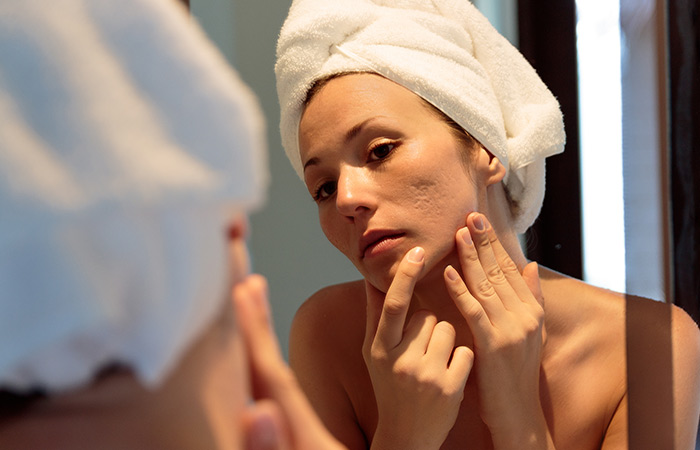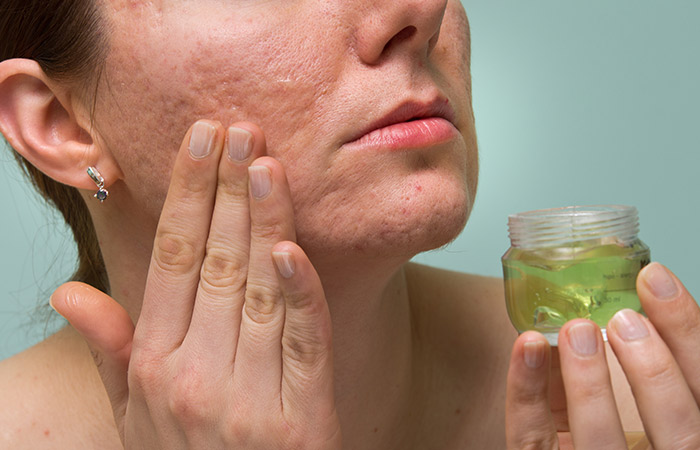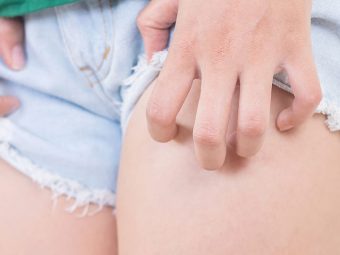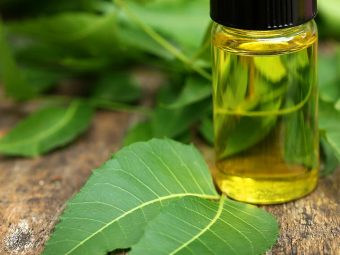How To Get Rid Of Pockmarks? Is It Possible To Get Rid Of Them?
Healthy and smooth skin is no longer an unachievable dream if you treat the scars on time.
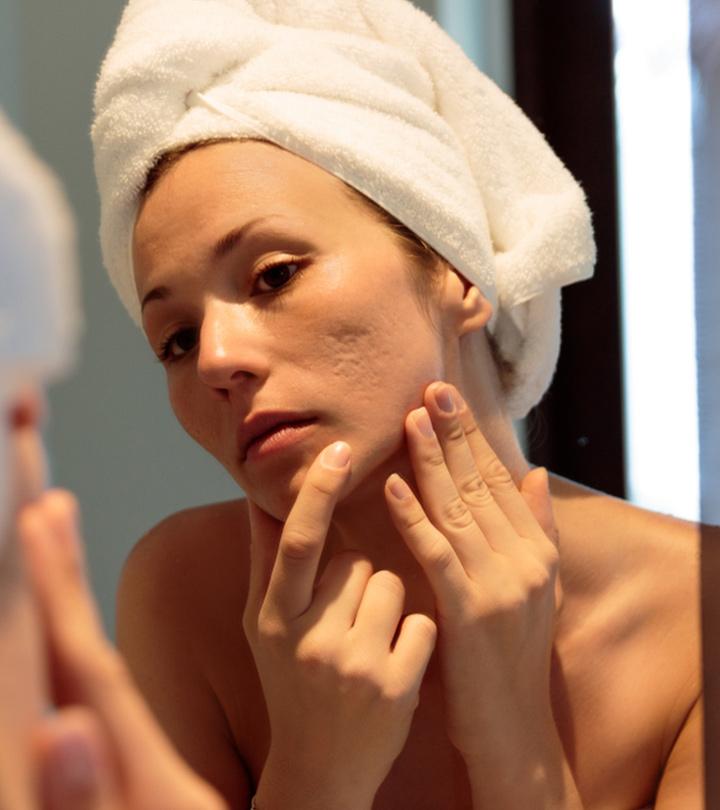
If you are wondering how to get rid of pockmarks on your face, you have come to the right place. Here, we will help you know all about these scars and ways to treat them.
Pockmarks occur due to the skin damage done by an infection, inflammatory acne, and various other reasons. They make your skin look uneven. While getting rid of pockmarks may not be possible, several treatments are available that help minimize them. In this article, we have explained pockmarks, how they occur, ways to treat them, and other related information. Continue reading to know more.
In This Article
What Are Pockmarks, And What Causes Them?
iStock
Pockmarks are the scars and indentations that occur after your skin is damaged due to an infection, inflammatory or cystic acne, or chickenpox. These are often concave, shallow depressions, indicating deeper damage to the dermis. They make your skin look uneven and can make you conscious about your appearance.
You develop pockmarks when a skin condition affects the deeper layers of your dermis. Your skin starts healing itself by laying down collagen. If the body produces too much or too little collagen, the site becomes more noticeable than the rest of your skin, resulting in a scar.
Picking and popping pimples is one of the causes of scars. However, this is not the only reason to get pockmarks. Several other causes can result in pockmarks on your skin, such as:
- Infectious Diseases
Infectious diseases, such as chickenpox and smallpox, cause blisters and raised bumps on your skin. These bumps turn itchy when they start to heal. When you scratch the blisters before they heal completely, you get pockmarks.
- Other Skin Infections
Skin infections caused by bacteria, such as Streptococcus or Staphylococcus (can also leave behind scars or pockmarks .These infections often occur in the hair follicles, and you get a painful boil.
Any recent cut on your skin can also get infected by these bacteria. This affects the deeper skin layers and leaves behind a scar or pockmark.
It is impossible to get rid of pockmarks. However, there are treatment options available to minimize their appearance and make your skin appear smoother than before.
Remember, these treatments give varying results depending on your skin type and the depth of scars you have. Also, not all skin types can tolerate all treatments. Consult a doctor beforehand to decide what type of treatment is suitable for you.
Treating Pockmarks: Ways To Minimize Their Appearance
iStock
1. Chemical Peeling
From minimizing scars to reducing the appearance of wrinkles, chemical peels are used for various skin care and cosmetic purposes. Depending on your scars and pockmarks, the dermatologist may suggest a chemical peeling procedure.
In this procedure, a layer of skin acid is applied to the affected area. The acids used include salicylic acid, glycolic acid, trichloroacetic acid or TCA, and pyruvic acid.
Chemical peels work best for flat surface scars. You have to use these regularly to get the best results.
Some of the side effects of chemical peels include:
- Burning sensation
- Itching
- Skin redness
2. Dermal Fillers
These work best for deep pockmarks. According to the American Academy Of Dermatology, these fillers can plump up depressed scars (1). Dermatologists use the patient’s fat, collagen, or any other substance to fill the scars.
Some fillers are temporary, lasting anywhere between 6 months to 18 months, while some are permanent fillers.
Fillers often cause side effects, such as:
- Allergic reactions
- Skin irritation
- Skin infection
3. Dermabrasion
This is a skin resurfacing treatment and gives you similar results as chemical peels. In this procedure, the dermatologist uses a rotating wired brush-like tool to gently remove the epidermis (top layer) and dermis (middle layer) of your skin.
Scraping the top layers make your skin appear even and smooth. Dermabrasion is preferable for deeper pockmarks.
However, it also has side effects such as:
- Skin infection
- Blotchy skin
- Large pores
- Fresh scarring
4. Microdermabrasion
In this procedure, the epidermis is gently scrubbed or removed using abrasive ingredients, such as aluminum oxide or diamond tip handpiece.
If you have small surface scars, this is the best option for you. However, you may need to undergo microdermabrasion frequently to get remarkable results.
The possible side effects of this treatment include:
- Minor bruises
- Redness
- Itching
- Tightness of skin
- Post-inflammatory hyperpigmentation
5. Microneedling
This process is also known as Collagen Induction Therapy. Here, the pockmarks are punctured with tiny needles. Your body starts producing more collagen in the affected area to heal the wounds, and eventually, it fills the pockmarks.
To get maximum results, you may have to go for follow-up treatments as suggested by the dermatologist. Although this is considered a safe procedure, you may experience redness and irritation for a few days.
6. Ablative Laser Resurfacing
In this treatment, the healthcare professional uses a laser to remove thin layers of your skin. You may need to undergo the treatment for several weeks or sessions, as suggested by the dermatologist. However, the results can last for a long time (several years) without any follow-up procedure.
This treatment may have a few side effects and risks involved, such as:
- Redness
- Swelling
- Change in skin color
7. Fractional Laser
In this treatment, a laser is used to burn the outer layer of scar tissue, thus promoting cell regeneration. This eventually heals and covers up the pockmarks, making them less visible.
This treatment also comes with a few side effects, such as:
- Infection
- Changes in skin color
- Redness
- Itching
- Swelling
If you do not want to undergo these treatments, you may try natural ways to minimize the pockmarks. Do not expect overnight results. Natural treatments and home remedies do not guarantee results, but those who have tried these methods saw noticeable results with long-term and persistent usage.
Is There Any Natural Way To Get Rid Of Pockmarks?
iStock
1. Over-The-Counter Products
This is the first option that most of the people resort to before moving on to other remedies. From silicone gel sheets to creams, there are multiple options available. These mainly hydrate the area and help in minimizing the appearance of the scars.
These products also help to reduce skin discomfort. However, you have to be patient and persistent in using OTC products as they take months to show results.
Apart from creams and sheets, you may try low-strength chemical peels. These peels will not give you results similar to chemical peeling done in a clinic, but with continuous use, they might give results.
2. Moisturizing Oils And Butters
Moisturizing the affected area with oils and butters often helps in minimizing pockmarks and scars. However, not everyone gets the same results. Some might see a noticeable improvement in the appearance of scars, while others may not.
Moreover, you may be allergic to some butters and oils, which can cause other adverse effects on your skin. Hence, do a patch test before using them. Some options that you may try include:
- Jojoba oil
- Cocoa butter
- Olive oil
- Rosehip seed oil
- Hempseed oil
- Shea butter
Studies have found that moisturization can be beneficial in scar management (2).
3. Face Massage
This will not help reduce your pockmarks, but you can try facial massage along with other treatments. Massaging the face stimulates the muscles, boosts circulation, and rejuvenates your skin.
4. Essential Oils
Lavender and frankincense essential oils can help in wound healing and minimizing scars. Both lavender and frankincense essential oils inhibit the production of Collagen III, ensuring proper wound healing (2), (3).
Try using the oils during the healing period to reduce the appearance of scars or pockmarks.
Time heals all wounds, but it cannot always erase the scars. Pockmarks do not fade by themselves, and there is no proven way or standard treatment method that can guarantee to erase them. All you can do is take good care of your skin and consult a dermatologist and treat them to minimize their appearance.
Key Takeaways
- Pockmarks are the scars and indentations that occur due to the skin damage caused by an infection, acne, or chickenpox.
- Dermal fillers can plump up depressed scars. Also, dermatologists use the patient’s fat, collagen, or other substance to fill the scars.
- Wound healing properties of lavender and frankincense essential oils can help reduce the appearance of scars or pockmarks.
Pockmarks do not fade easily and there are not standard treatment options that can erase them completely. However, you can fade them to a certain extent. If the pockmarks on your face are making you conscious about your appearance you can consult a dermatologist. Also, take good care of your skin. Follow the suggestions discussed in the article, talk to a doctor to understand which treatment method may work for your skin. You may go for filler, chemical peeling, or lasr treatment. However, decide only after you have considered all the pros and cons of the treatments.
Frequently Asked Questions
Can aloe vera remove pockmarks?
Aloe vera can improve the skin and help promote wound healing (5). So, it may help reduce the appearance of pockmarks.
Are pockmarks permanent?
Pockmarks do not go away on their own. If not treated on time, they may become permanent.
Does retinol help pockmarks?
Using retinol may help improve the appearance of pockmarks as it stimulates collagen production (6).
How do you cover pockmarks?
You can use a full-coverage foundation and concealer to cover pockmarks.
Does vitamin E work for pockmarks?
There are not enough studies to prove vitamin E removes scars or pockmarks. Therefore, it is best to consult your dermatologist to get advice.
Does vitamin C help with pockmarks?
Vitamin C may help reduce the appearance of pockmarks as its application has proven to have effective results on scars (7).
Sources
- ACNE SCARS: DIAGNOSIS AND TREATMENT. American Academy of Dermatology.
https://www.aad.org/public/diseases/acne-and-rosacea/acne-scars#treatment - Updated Scar Management Practical Guidelines: Non-invasive and invasive measures.
Journal of Plastic, Reconstructive & Aesthetic Surgery, ScienceDirect
https://www.sciencedirect.com/science/article/pii/S1748681514001739 - Wound healing potential of lavender oil by acceleration of granulation and wound contraction through induction of TGF-β in a rat model. BMC Complementary & Alternative Medicine, US National Library of Medicine, National Institutes of Health.
https://www.ncbi.nlm.nih.gov/pmc/articles/PMC4880962/ - Biological activities of frankincense essential oil in human dermal fibroblasts. Biochimie Open, ScienceDirect.
https://www.sciencedirect.com/science/article/pii/S2214008517300020 - The Effect of Aloe Vera Clinical Trials on Prevention and Healing of Skin Wound: A Systematic Review
https://www.ncbi.nlm.nih.gov/pmc/articles/PMC6330525/ - Retinoids in the treatment of skin aging: an overview of clinical efficacy and safety
https://www.ncbi.nlm.nih.gov/pmc/articles/PMC2699641/ - Improved scar appearance with combined use of silicone gel and vitamin C for Asian patients: a comparative case series
https://pubmed.ncbi.nlm.nih.gov/24091488/




